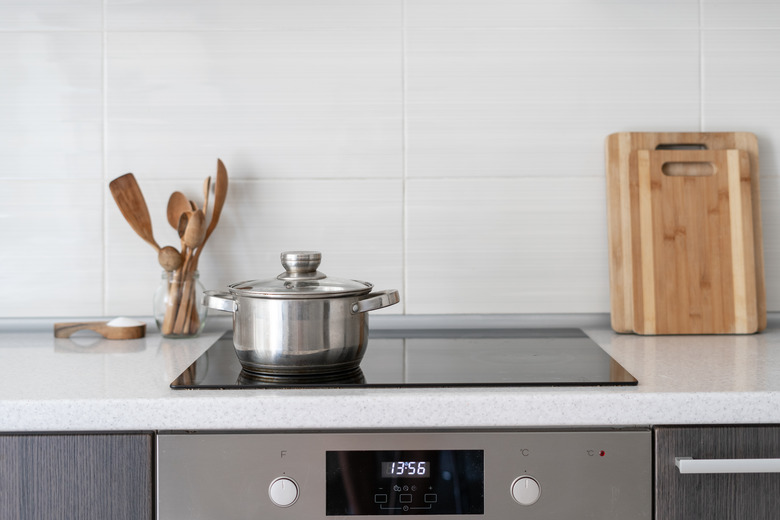How To Remove Cloudy Rings On A Ceramic Stove
Flat stove tops are a common appliance for many reasons. They add a nice, sleek look to your kitchen and provide a flat surface to easily wipe down after preparing meals. However, after a few uses on your brand new stove, you may begin to notice that rings on your glass stove top are slowly appearing and seem impossible to remove. Luckily, with a few items, that cloudy glass stove can be restored to its former glory.
What Causes Cloudy Stove Glass?
What Causes Cloudy Stove Glass?
The cloudy appearance on your ceramic cooktop can be from a few things. It can be simple wear and tear from using your stove top on a regular basis. However, the more likely option is that the surface has been scratched while cooking or while trying to clean it, leaving the undesirable hazy gray finish on your ceramic stove.
Scratching the surface can happen unintentionally by using an abrasive cloth, scrubbing pads or even the wrong cleaning solution. Many new ceramic stoves come with a small cloth for cleaning the delicate top of the stove, which could also leave scratches if not used properly.
Remove Haze From Cooktop
Remove Haze From Cooktop
The good news is that removing haze from a cooktop can be rather easy if you know what items to use and what items to avoid. It's important to note that the haze will not be removed by cleaning and scrubbing at the surface. Since the haze comes from tiny micro-scratches, you will need to polish off the top with an appropriate ceramic stove top polish.
How to Clean Stuff offers a short list of appropriate polishes for such a surface to remove your black glass top stove discoloration. Before applying the polish, make sure that the surface has been thoroughly cleaned. If the surface was not cleaned and there is a tiny crumb or even a speck of dust, it could cause the haze to get worse. You will be rubbing the entire surface with the polish, which means you could be dragging the crumb along the stove top, making the cloudiness worse.
Properly Cleaning the Surface
Properly Cleaning the Surface
Cleaning the ceramic stove top does not have to be a daunting task. The first rule of thumb should be to wipe down the cooktop after each use once the surface has completely cooled. Continually cooking on a dirty surface could cause the spills to become burnt-on, making them more difficult to remove.
If you have a spill on the surface that is proving difficult to remove, the best way to tackle the situation is not by scrubbing at it, especially not with an abrasive sponge or cloth. Try using a razor blade scraper, as suggested by CNET, and scrape away at the surface on an angle. Pay attention to the angle of the blade so that it always remains flat along the surface and tilted at a 45-degree angle so as to not permanently damage the cooktop.
After all the debris and cooked-on residue have been removed, you can then clean the surface with a damp cloth or a specific ceramic or glass stove top cleaner. By cleaning your stove top regularly, you are sure to keep it looking and performing at its best. To avoid any further damage or scratches, it is also best to avoid sliding any pots or pans along the surface while cooking.
